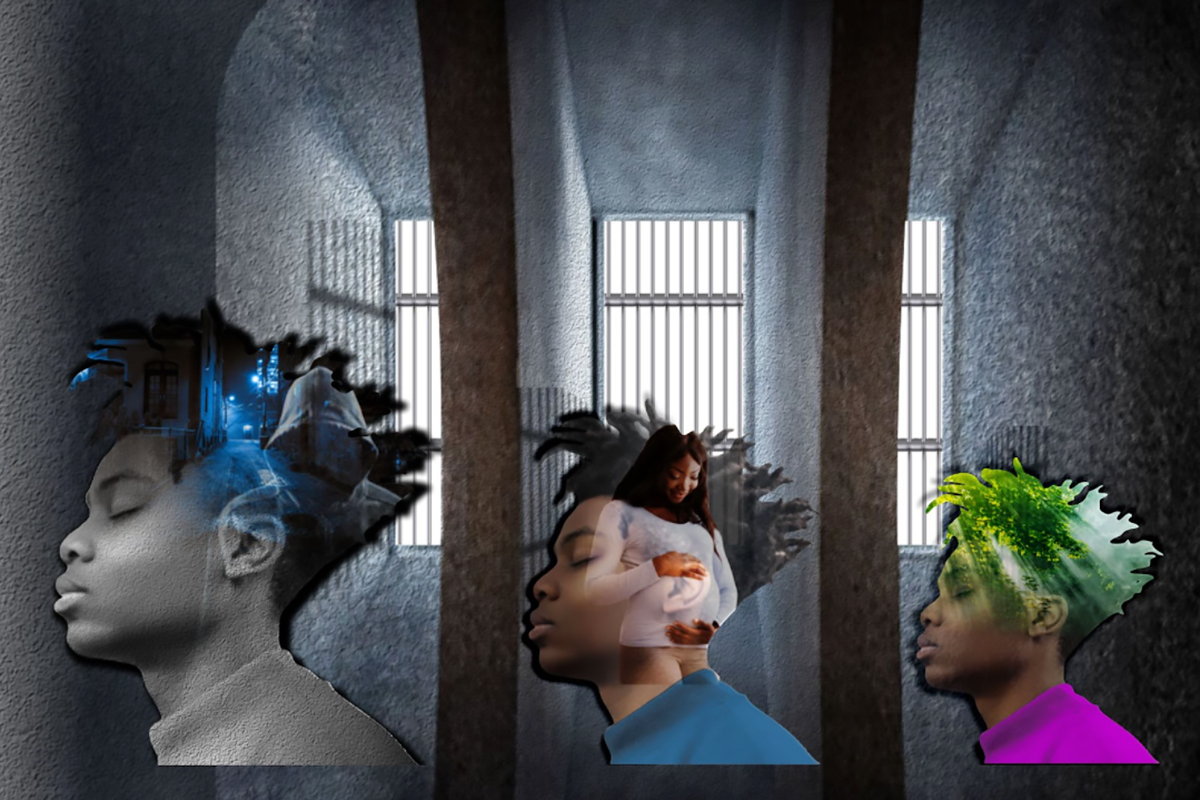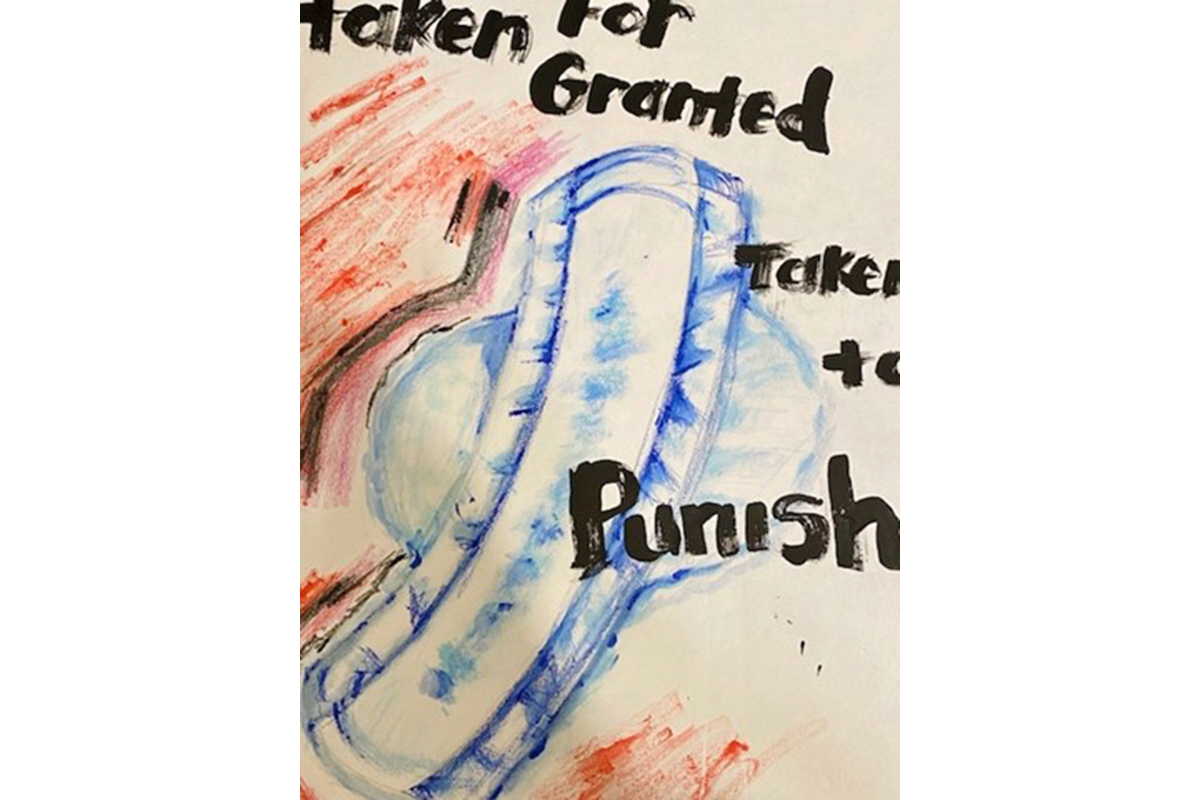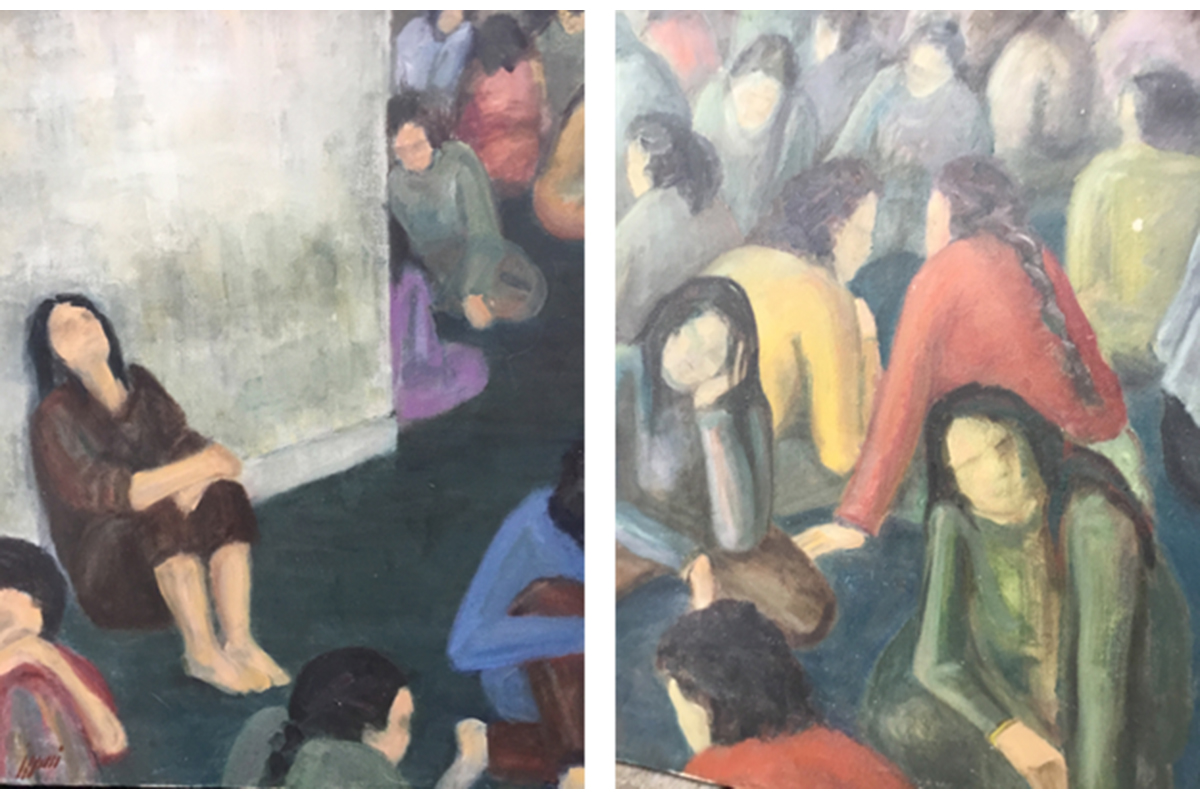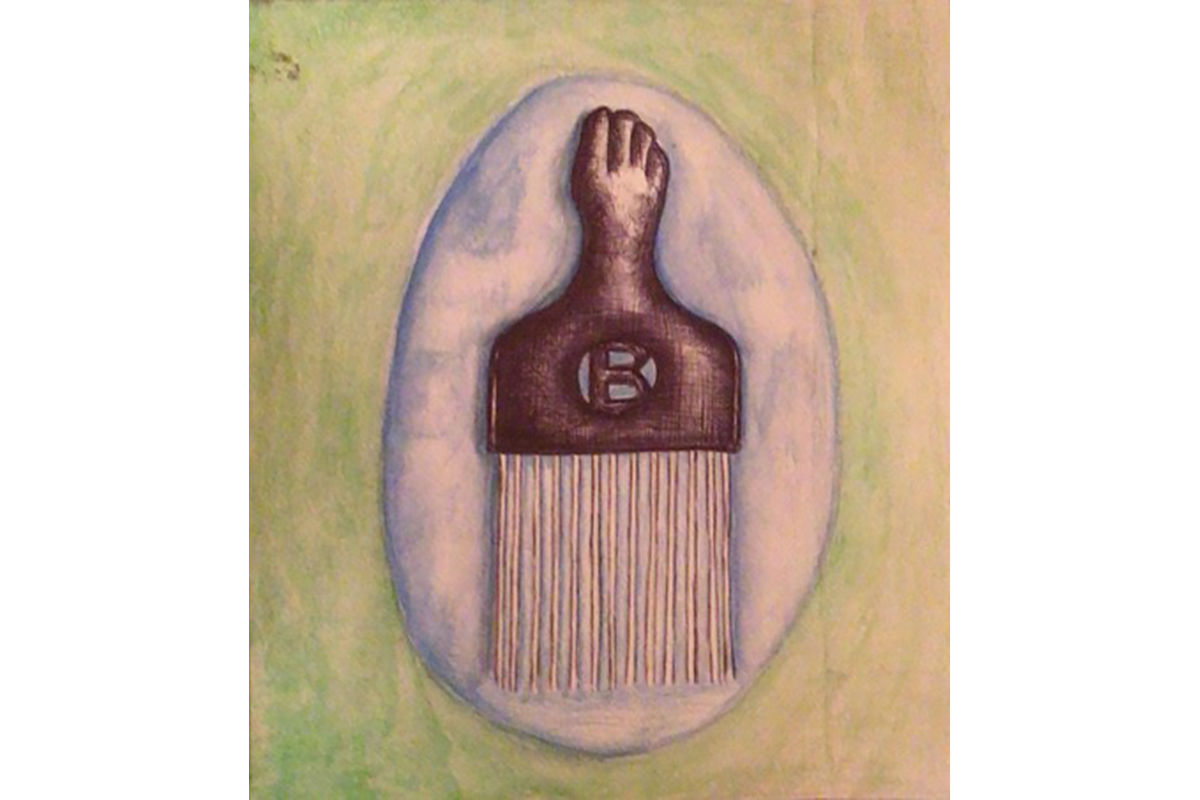
An exhibition at Krannert Art Museum featuring work by formerly incarcerated artists explores their shared experiences of detention and how art helped them maintain their humanity. Visiting artist Nasrin Navab curated the exhibition, "Reckless Law, Shameless Order: An Intimate Experience of Incarceration."
Photo by L. Brian Stauffer
CHAMPAIGN, Ill. — An exhibition at Krannert Art Museum at the University of Illinois Urbana-Champaign explores the shared experiences of people in prison or held in detention, focusing on how art helps maintain one's humanity in difficult conditions. The artists' stories seek to help gallery visitors understand the effects of incarceration.
"Reckless Law, Shameless Order: An Intimate Experience of Incarceration" opens Feb. 11 and is on view at KAM through April 2. The exhibition features the work of several formerly incarcerated artists, including Nasrin Navab, a Washington, D.C.-based artist, activist, architect and urban designer. Navab is a visiting artist at the U. of I. and curated the exhibition with assistance from artists Sarah Ross and Pablo Mendoza.
The exhibition is an interdisciplinary collaboration that uses art as a means of constructing solidarity. It was inspired by prior collaborations among urban and regional planning professor Faranak Miraftab; art professor Ryan Griffis; Ross, of the Prison+Neighborhood Arts/Education Project; and Navab; along with other artists including Navab's sister Nahid Navab.
These collaborations led to workshops exploring how art can help share experiences, especially among incarcerated people across cultures and national borders. Nasrin Navab was a university student in Iran at the time of the 1979 Iranian Revolution. She was arrested with other student activists and spent three years in the Evin prison, held in small, overcrowded cells with women who had babies and young children with them.

Kenneth Norton, "Reflection." Digital Art, 2021. © Kenneth Norton
Courtesy Krannert Art Museum
One of the other artists spent 12 years in solitary confinement. The group of artists were men and women of different ethnicities and backgrounds, but Navab said they connected instantly at the workshops.
"We didn't need anything but humanity for that," she said.
They shared stories about the simple things they missed, such as pens and erasers, which were forbidden, and the smell of a fresh apple. They talked about maintaining their sense of self by making cards for other inmates or by using storytelling and puppet-making for the children detained with Navab.
"You connect through art. You put every assumption down and connect through your senses, instead of judgment," Navab said.

Lauren Stumblingbear, "Objects – Pad." Mixed media, 8x11, 2021. © Lauren Stumblingbear
Courtesy Krannert Art Museum
Creating art can make a horrible situation bearable, Navab said, and the connections made through art help people understand themselves and their past. She said she hopes the artwork will allow viewers to connect to the artists as people.
"That's important to us. It can open up conversations about how we can make a more humanistic and just society. This educational part is very important for me," Navab said. "You can see the effect of incarceration in each individual and each life, and what they go through if they have no future to imagine."

Nasrin Navab, "Evin – Ward 4." Oil on Canvas, 2 – 24x 30, 1989. © Nasrin Navab
Courtesy Krannert Art Museum
The artwork in the exhibition includes paintings, drawings, video and assemblage. Navab's work of art "Mirror of Time," made in collaboration with other artists, centers on the experiences of incarcerated people, juxtaposed with events happening in the world outside prison walls. At first look, visitors can see images that present an outsider's view, but the art reflected through a mirror shows perspectives on what is happening inside prison. The work also shows a timeline beginning when the first artist in the exhibition was imprisoned and ending when the last one was released.
"Mirror of Time" starts with a video of Nasrin Navab and Miraftab talking about their experiences in Iran. Miraftab also was a university student during the Iranian Revolution, and was forced to flee the country.
"Both of us experienced displacement. Mine was through exile, hers was through incarceration," Miraftab said. "There are many different ways to experience displacement. It could be deportation, incarceration, exile. It is being cut off from family, your social being and your identity."
The exhibition also includes "The Little Objects" – items that have special meaning for the artists – and an installation of hanging papers with odors that were forbidden in various prisons. Another collaborative video features stories about the oppressive effects of surveillance and the constant pressure of being watched.

Vincent Robinson, "Objects – Brush." Mixed media, 9x12, 2021. © Vincent Robinson
Courtesy Krannert Art Museum
Miraftab said the exhibition is particularly timely and can address divisions resulting "not by bricks and mortar but by stigma," when certain people are labeled as dangerous or bad. She said one way of defeating efforts to divide people is by creating spaces for understanding and solidarity. She hopes teachers will bring students to see the exhibition and connect with the humanity of the people who were incarcerated.
"All of the artists, even though they were put in situations to be crushed and dehumanized, protected their humanity," Miraftab said. "It's their humanity that comes through in their art."
An opening reception for "Reckless Law, Shameless Order" will be held Feb. 11 from 1 to 3 p.m. Ross will moderate a conversation among exhibiting artists about their experiences of police, courts, ICE, surveillance, and incarceration and how they use art to express the realities of those experiences.
The play "My Name is Inanna," about a woman who flees political persecution in her home country only to face marginalization in the U.S., will be performed by Maryam Abdi on Feb. 18 at 1 p.m. A Q&A session with Abdi and playwright Ezzat Goushegir will follow the performance.
Other related events include a March 3 poetry reading and a March 24 storytelling event and closing reception.






